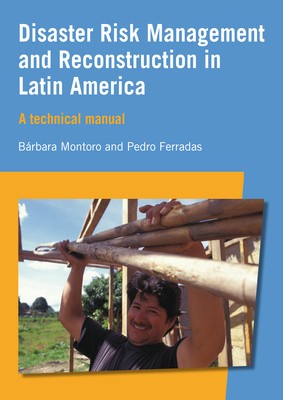
- We will send in 10–14 business days.
- Author: Bárbara Montoro
- Publisher: Practical Action Publishing
- Year: 2014
- Pages: 140
- ISBN-10: 1853396729
- ISBN-13: 9781853396724
- Format: 21 x 29.7 x 0.7 cm, minkšti viršeliai
- Language: English
- SAVE -10% with code: EXTRA
Disaster Risk Management and Reconstruction in Latin America (e-book) (used book) | bookbook.eu
Reviews
Description
Earthquakes cause devastation, and it is those who are already vulnerable who suffer most from from the repeated destruction of their homes. How can we enable those in disaster-prone areas to both plan for, and recover, in the wake of disasters? Over the centuries, the Andean region of Latin America has suffered numerous earthquakes. Documenting these disasters can help improve risk assessment and risk reduction strategies, as well as emergency response and reconstruction work. This practical manual offers an up-to-date resource covering both an intervention method and technical aspects of disaster mitigation. This revised manual is an important resource for all involved in humanitarian disaster response and planning. The guide includes how to define and organize the intervention project, how to administer the reconstruction work, how to assess beneficiaries and train local people for different roles. The importance of community-based participatory processes is a core strategic approach; people's experiences of past disaster events, most notably earthquakes and floods, demonstrates how local knowledge has been used to develop awareness of danger and also help prepare for improved future disaster response and reconstruction. Disaster Risk Management and Reconstruction in Latin America is important reading for development professionals and generally for all who are involved in humanitarian disaster risk response and planning.
EXTRA 10 % discount with code: EXTRA
The promotion ends in 22d.09:35:56
The discount code is valid when purchasing from 10 €. Discounts do not stack.
- Author: Bárbara Montoro
- Publisher: Practical Action Publishing
- Year: 2014
- Pages: 140
- ISBN-10: 1853396729
- ISBN-13: 9781853396724
- Format: 21 x 29.7 x 0.7 cm, minkšti viršeliai
- Language: English English
Earthquakes cause devastation, and it is those who are already vulnerable who suffer most from from the repeated destruction of their homes. How can we enable those in disaster-prone areas to both plan for, and recover, in the wake of disasters? Over the centuries, the Andean region of Latin America has suffered numerous earthquakes. Documenting these disasters can help improve risk assessment and risk reduction strategies, as well as emergency response and reconstruction work. This practical manual offers an up-to-date resource covering both an intervention method and technical aspects of disaster mitigation. This revised manual is an important resource for all involved in humanitarian disaster response and planning. The guide includes how to define and organize the intervention project, how to administer the reconstruction work, how to assess beneficiaries and train local people for different roles. The importance of community-based participatory processes is a core strategic approach; people's experiences of past disaster events, most notably earthquakes and floods, demonstrates how local knowledge has been used to develop awareness of danger and also help prepare for improved future disaster response and reconstruction. Disaster Risk Management and Reconstruction in Latin America is important reading for development professionals and generally for all who are involved in humanitarian disaster risk response and planning.


Reviews